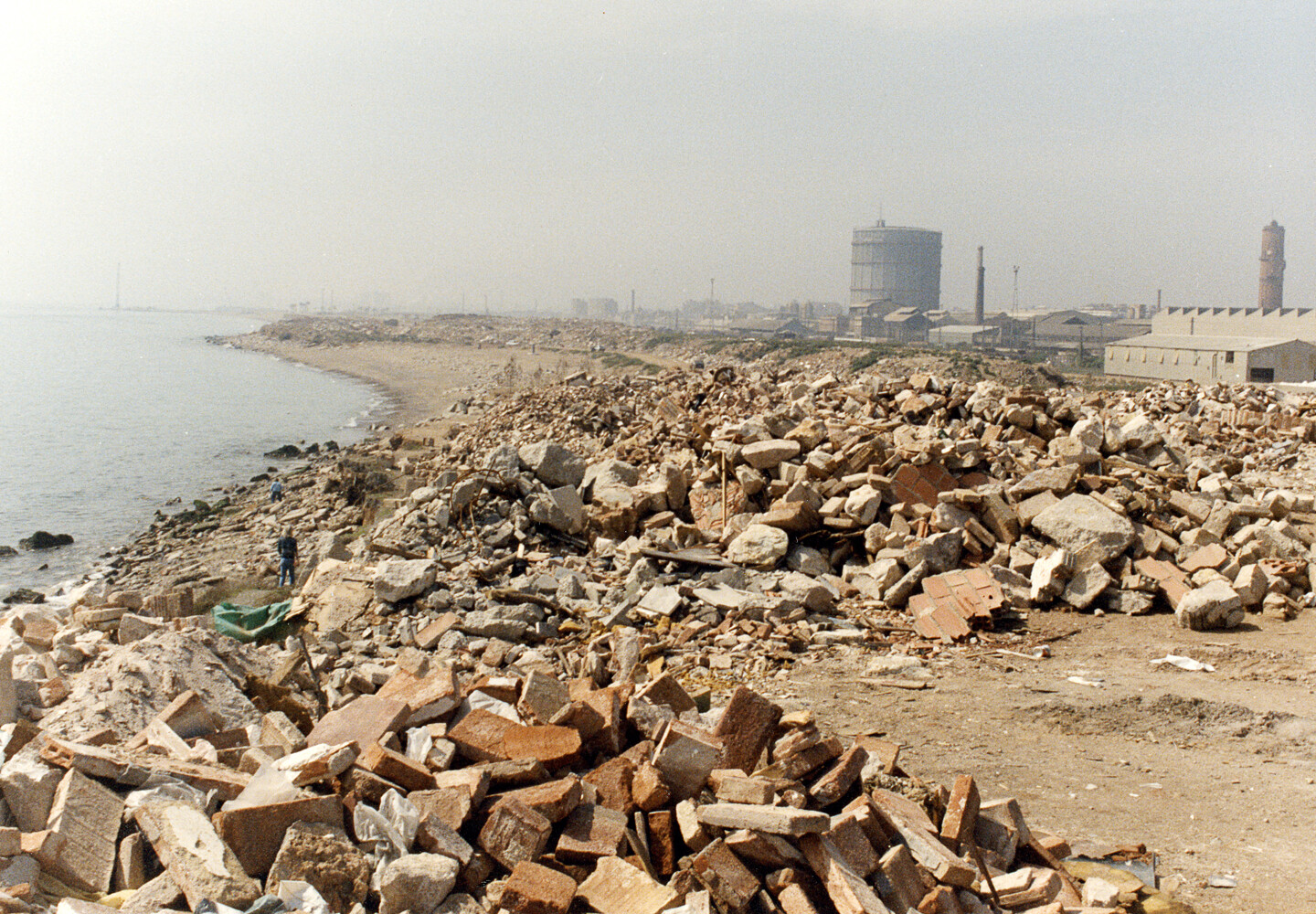City of sand
June 10–October 22, 2023
C/ Sant Adrià, 20
08030 Barcelona Catalonia
Spain
Hours: Tuesday–Saturday 12–8pm,
Sunday 11am–3pm
T +34 932 56 61 55
centredart@bcn.cat
From June 10 to October 22, 2023, Fabra i Coats: Contemporary Art Centre of Barcelona will host City of Sand by David Bestué, an exhibition curated by Marta Sesé that proposes a shift in the way we look at the city of Barcelona.
A huge storm washes up tins and plastic from the past forty years onto the sand of the beach. The remnants of a medieval well, now in a construction sack in the storeroom of a museum, hold different vestiges that make it possible to discover the daily habits of people who were here long before we were. Close to the Vall d’Hebron Hospital, piled in a corner, are large pieces of concrete that were once part of the Olympic Archery Field, designed by Enric Miralles and Carme Pinós for the Olympic Games. In the centre of Barcelona, on Paradís street, a mill wheel embedded in the ground marks the highest spot of what was the Roman city. David Bestué, who had all these references at the forefront of his mind when conceptualising City of Sand, sees this wheel as an element that devours everything, crushing the city, turning it into sand.
Bestué understands the city as material and symbol and contrasts the projected dream idea of city with popular and counter imagery. In a way, he builds a contra-history out of what can be found on the fringes, using the scraps, remnants and debris. Rather than constructing new imagery, City of Sand establishes a framework for playing with the troubled, disturbed times—the unlived and recent pasts, the presents and the futures to come—so as to find the seeds from which imageries of the city—and sculpture—can be harvested, like a place of possibility and strength. Although in many cases he works with deconstructed materials, using objects pulverised to grade zero, his sculptural work is compositional and propositional. The exhibition brings together new and recently produced work that integrates material elements connected to the city that, somehow, capture its most effective and poetic life. There are also works of diverse authorship that have been loaned by various institutions and that, somehow, bear the collective image of Barcelona.
On the ground floor, elements from pasts not lived by the artist are displayed. Bestué brings together, without hierarchy or order, a series of objects and materials that form a sort of (broken) museum of curiosities, in which different historical and undefined times are mixed together. The images, rarely seen before in Bestué’s exhibitions, take centre stage on the first floor. We are in a timeframe that spans, approximately, from 1979 to 2011, from the first democratic city council to the end of an era and the beginning of a new political paradigm. Bestué has made a sweep of all the editions of the La Vanguardia newspaper from this period. This exercise—contrary to the inertness of sculptural material—is a way of working with time, with facts, bringing them to the present. The four projections—destruction, models, contra and threads, the latter understood as a way of spinning themes that remain constant throughout this enormous reading—are at odds with a set of models, which are representative of the projected, ambitious, ideal city. The present and the power of the future occupy the upper floor: a wall, partially covered with the petals of different flowers found in the city, merges with the horizon; sugared pears hang above us; a wishful back, made of city waste such as newspaper, bougainvillaea and fragments of stone from a façade and the pillars envelop us in eroticism and desire.

